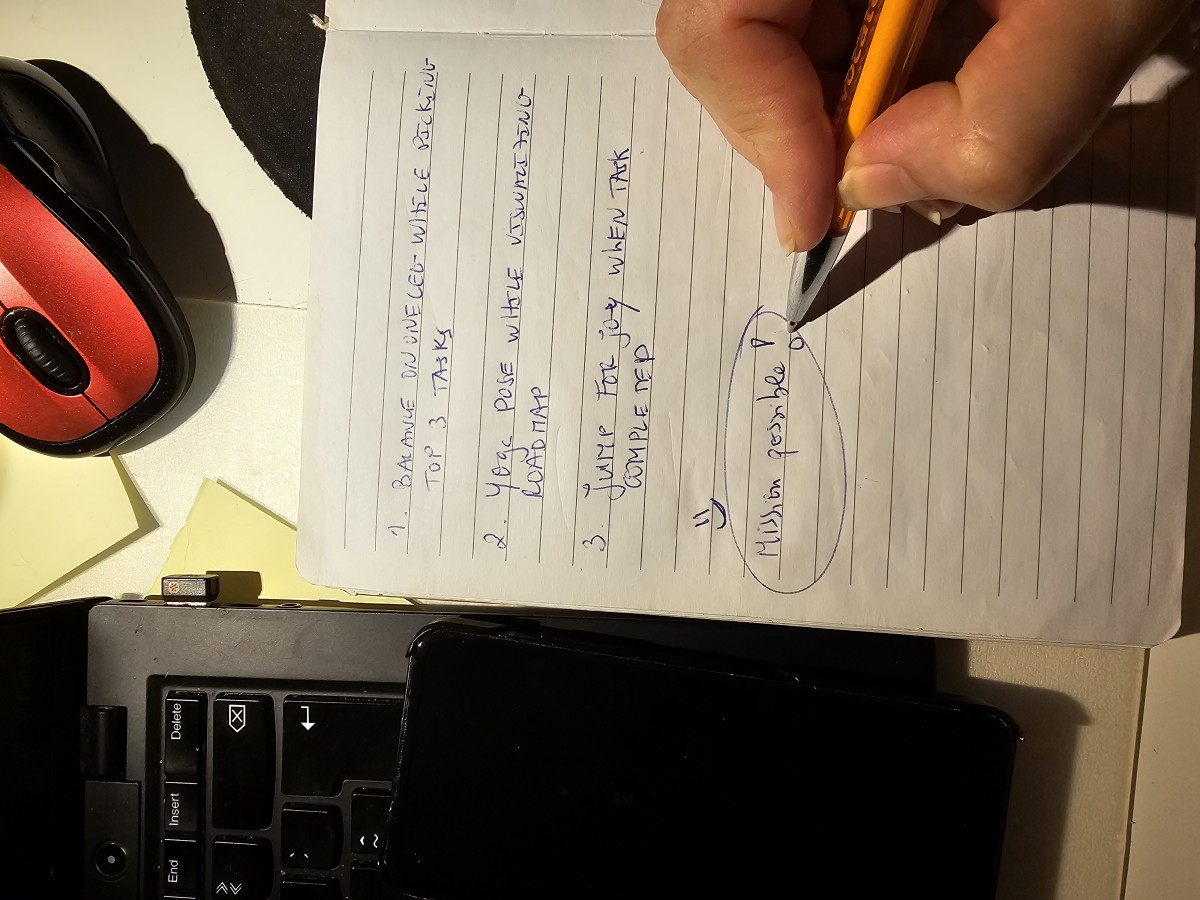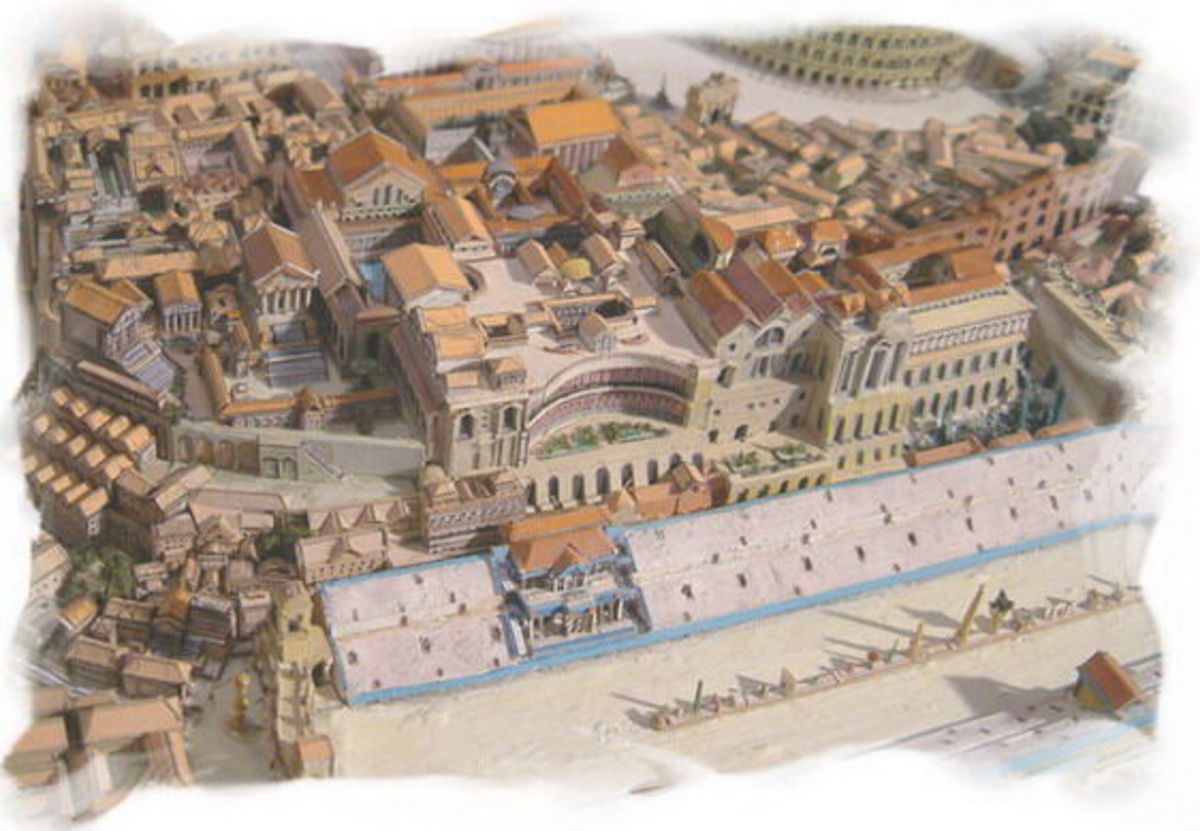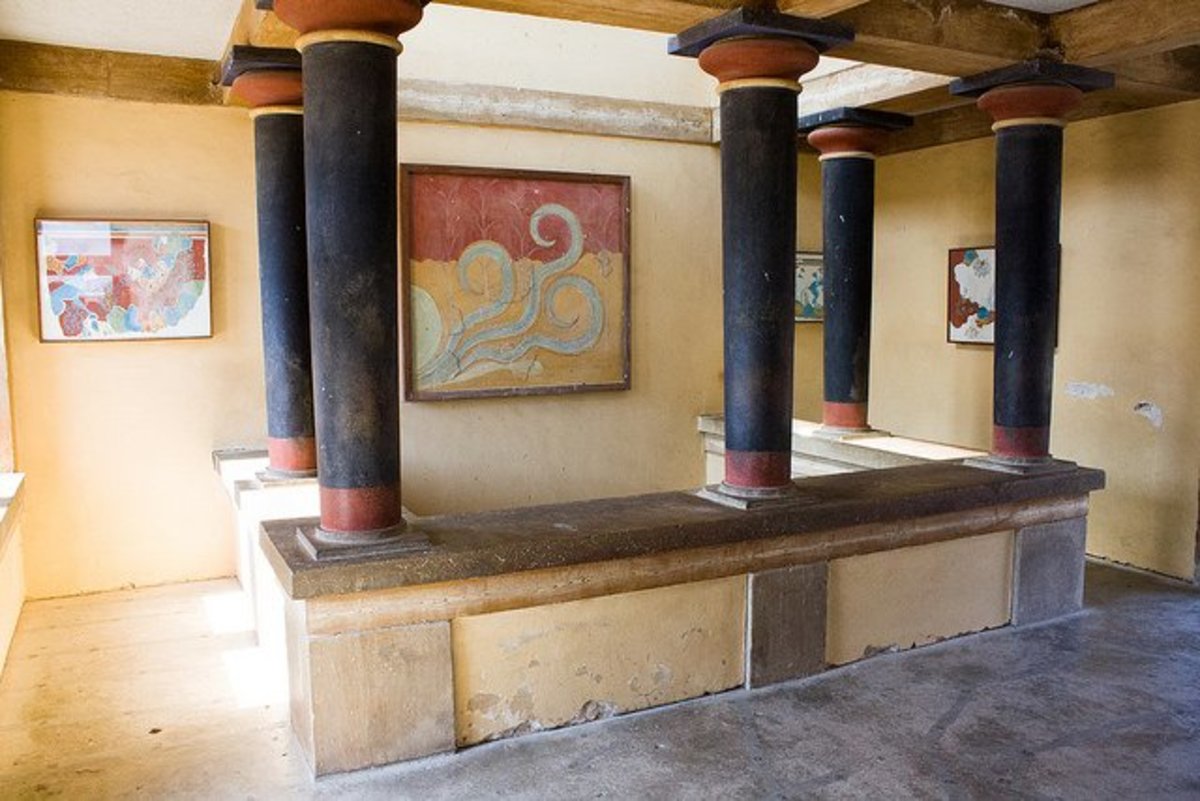Video Resumé
Captain, Steven Egloff, AAS Project Management
E-mail: stevenegloff@yahoo.com
Most Recent Project
My most recent project began late August 2011, when hurricane Irene passed over The Bahamian Islands and devastated many homes and other structures. These structures were not designed or built to withstand winds in excess of 75mph and rainfall amounts of over two feet in just hours.
My project in particular was located on the Bahamian Island of Eleuthera located approximately 700 miles south-south-east of South Carolina. The prefabricated monopole constructed dwelling lost its entire roof and subsequently sustained major water damage to the ground floor.
I served as project manager for this project and was able to utilize my degree in project management as well as my previous knowledge and vast experience in various trades. Not only did I manage this project but I designed and drew new structure layout, provided the material take-off, managed procurement of material, handled shipping and receiving of material, maintained site management, and performed scheduling.
I was also charged with designing/ building spiral staircase, installing cabinets, building center island in kitchen, siding the home, and installing A/C units and ductwork.
Design and Drawings: Using a student version of Auto-Cad 2011, I took dimensions provided by an insurance adjuster to reconstruct a basic drawing of the structure. I as well used photos of the pre-damaged structure to aid in the drawings. Working directly with the homeowner here in the United States we changed the floor plan and added approximately 300 square feet to the second floor of the home.
Once the drawings were approved by the owner I was flown to Eleuthera for three days. During that time I met with the general contractor and put the vision of the home into perspective for him. Together we compiled a material take-off list based on a rough take-off originally provided by the contractor using a rough design.
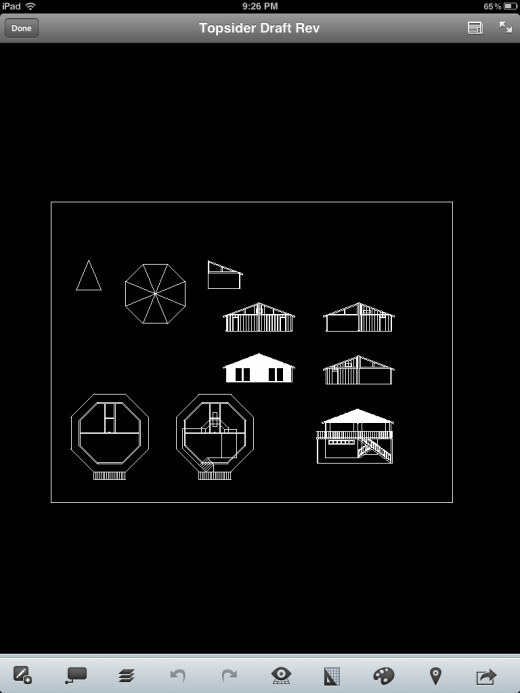
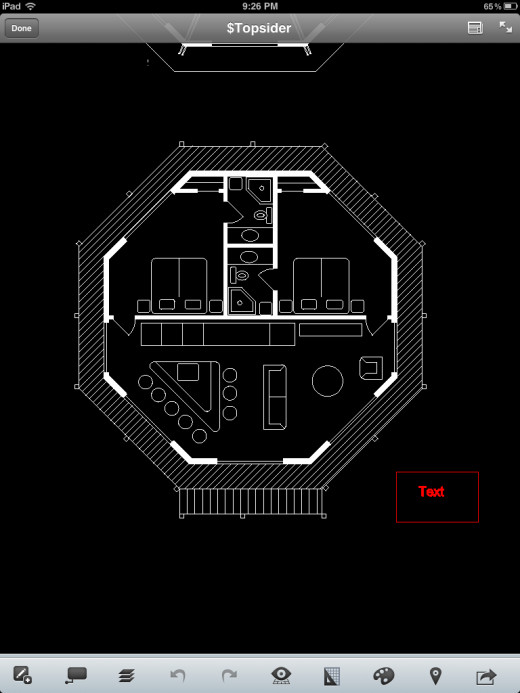
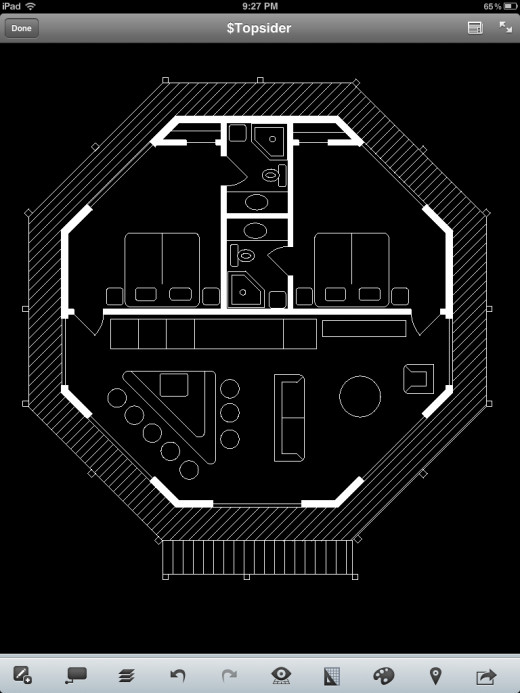
Material Take-off: The challenge of material take-off for this project was accuracy. Material on Eleuthera can cost up to 300% more money than here in the United States. For example; an 8’x 2”x 4” stud here in the United States costs about $2.00-$3.00. On Eleuthera the same piece of lumber will cost you about $7.00-$8.00.
Duty on material is also a tremendous amount of money, upwards of 45% depending on what it is. However, due to the fact this structure was damaged from a hurricane, Federal Emergency Management Administration (FEMA) laws granted a duty free passage of materials to the island. Even with duty free material it was still imperative to keep the entire project within a $125,000.00 budget to rebuild this structure.
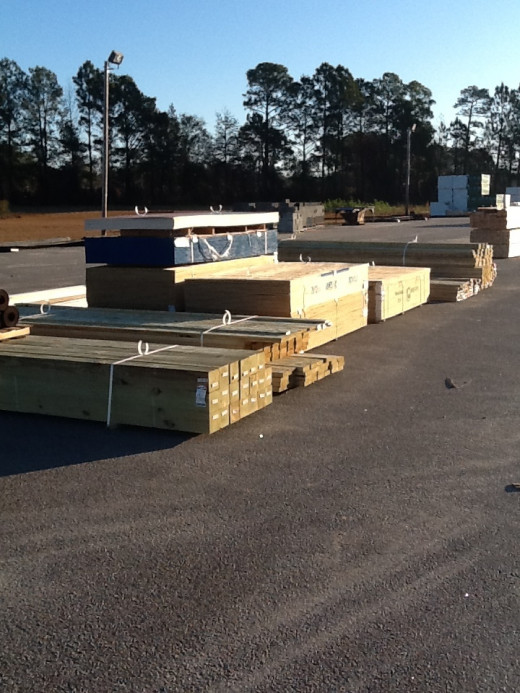
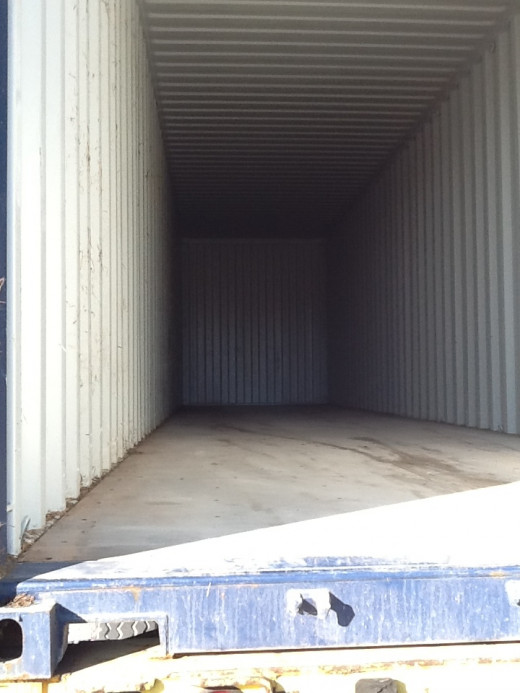
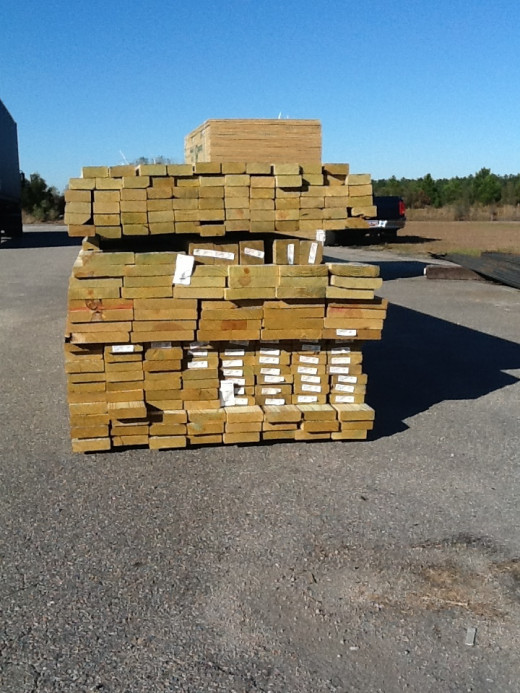
Procurement of Material: Upon my return to the United States I began to order and acquire the material on that list. All of the items were gathered over the course of a three week period and stored at a centralized storage facility. Everything from screws to siding, water heater to washing machine were bought, stored, and organized to pack in such a way to facilitate ease of future access.
Personal friends and other personal resources were helpful in determining material quantities for such things as plumbing supplies, electrical supplies, and central air conditioning supplies. All of these items were shipped from Myrtle Beach, SC directly to the jobsite on the southern end of the Island of Eleuthera.
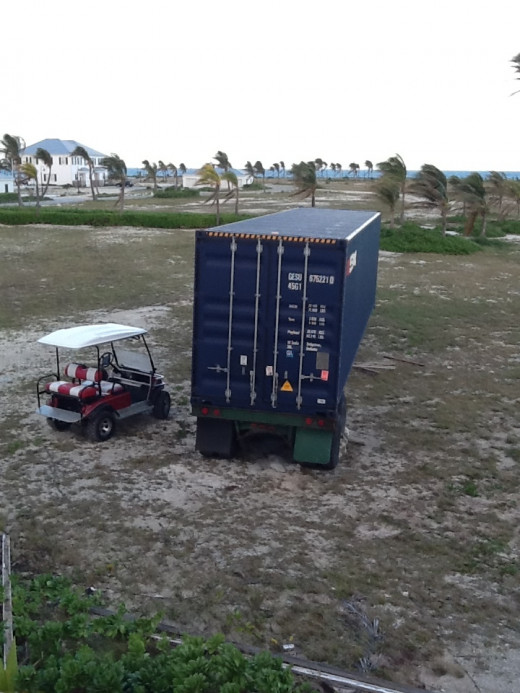
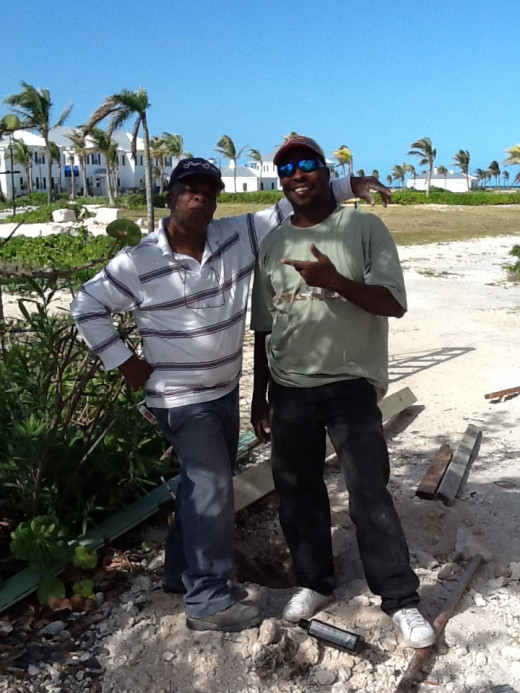
Shipping and Receiving: In late November, 2011 I coordinated pick-up of material by an island shipping company located in Port Everglades, Florida. This company sent a 40 foot container to Myrtle Beach. Four men and a fork truck loaded over 50,000 pounds of building material bound for the Caribbean. It took us an entire day of 10 hours, straight.
Approximately 3 weeks later on a Friday night the container cleared customs on Eleuthera. On the Sunday night following we guided the tractor trailer through uneven and narrow island roads avoiding island dogs, goats, and falling coconuts.
The delivery took over four hours from the dock on Eleuthera to the project site. My task in particular for this delivery was to hold up cable and phone lines with a special pole so the container could pass under them. It was exciting to ride on the side of a tractor trailer in paradise to say the least.
Finally, at 10:00PM that Sunday night we unhooked the trailer and inspected the contents. The container was packed so tight nothing could move. Not a single item was damaged.
Work began the next day and for 9 months I would travel to and from the island. I would manage on site material inventories with photos and videos at times when I would be in the United States. I would hold regular conference calls with contractor and relay any change orders immediately in real time.
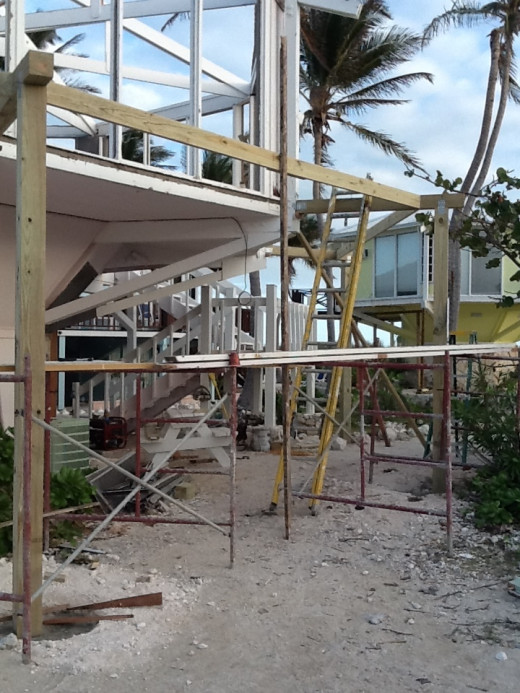
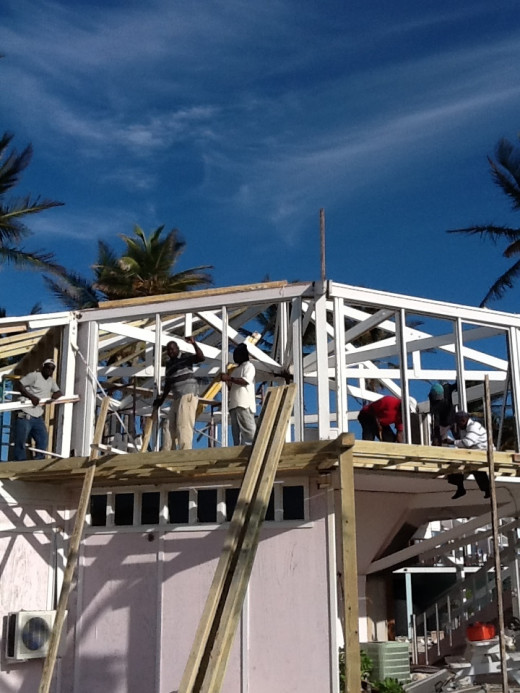
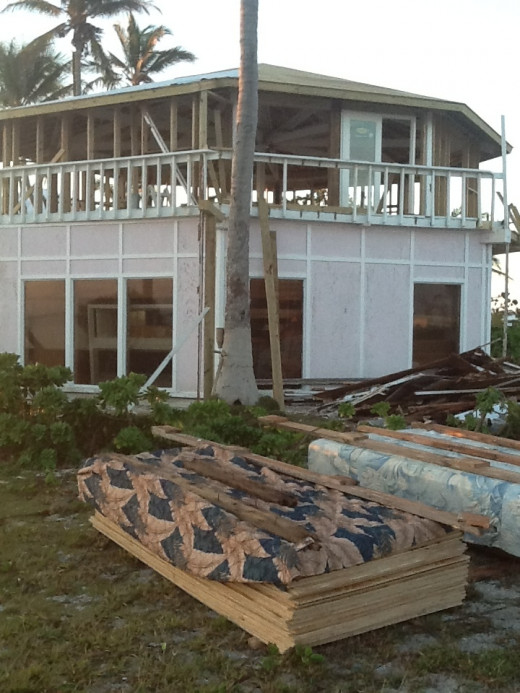
Hazardous Conditions
· Two foot deep footings were dug for an exterior staircase early in the project. They were marked with ¾” steel rebar driven directly in the center of the footing hole about 18” above grade. If you were to fall in the hole you would surely be impaled with that rebar.
· High winds and no safety rails on the second floor were a concern.
· Old nails were not removed from lumber used as temporary support for the new deck surrounding the structure.
· Trash and material scraps were thrown from upper levels without conscious effort to check that no one was working below. I lost my two front teeth when I was hit with a flying tape measure. Yes, ouch! I toughed it out for two weeks and lost 57 pounds from not eating. Nice. I am devoted. I got my two front teeth back for Christmas last year, obviously because that's all I wanted.
· Energized electrical wires and dangling outlet receptacles were not taped or capped and they were everywhere even exposed to the elements. Have you ever experienced the elements in the tropics?
· The power tools were outdated and their cords chewed-up. Saw blades and drill bits were dull and unsafe to use. Most tools had been handed down for years.
· Most workers on the jobsite were unskilled laborers wingin’ it.
Site Management: Site management on Eleuthera, in this case was managing to stay away from the site as much as possible, at least while other contractors were working. Jobsites on Eleuthera are dangerous and potentially deadly places to be. However, I needed to respect the way the locals learned to execute their trades. With my own well-being in mind I set my schedule accordingly to work when no one else was there. These are some examples of the dangerous and potentially deadly jobsite hazards:
·
Scheduling: Scheduling of sub-contractors was the single most challenging part of this project. You may ask “why”? It’s the islands, mon. There are only two things that will keep a Bahamian from going to work when scheduled, a chance to go fishing or too much rum the night before. You must remember that in the out-islands of the Bahamas the only things to do are drink rum and go fishing. That may explain why scheduling was so difficult. Enough said about that.
"Done Finished"
My involvement in this project was great and I worked very hard, not only intellectually but physically. I earned the respect of my fellow Bahamian workers by working hand in hand with them not instructing them on U.S. concepts they would not understand, nor want to. I have gained lifetime friends during a once in a lifetime experience. As the Bahamians would say the job is done finished. The keys were turned over to the very happy home-owner July of 2012.
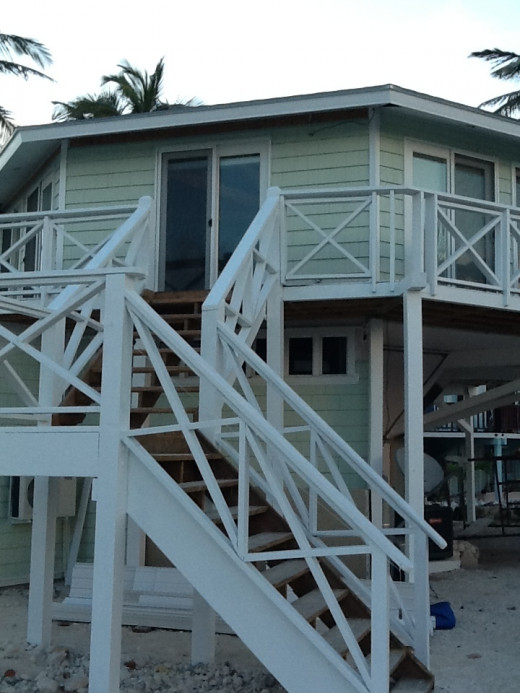
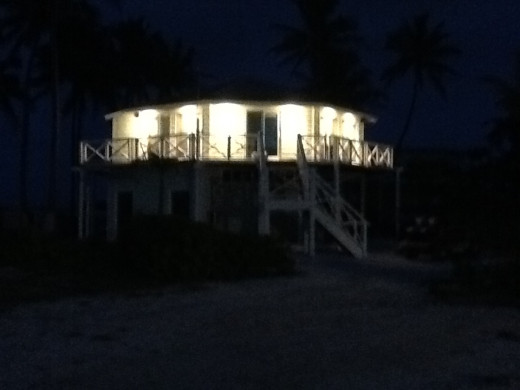
©2014 Steve West. Not to be duplicated without written consent of content author.





